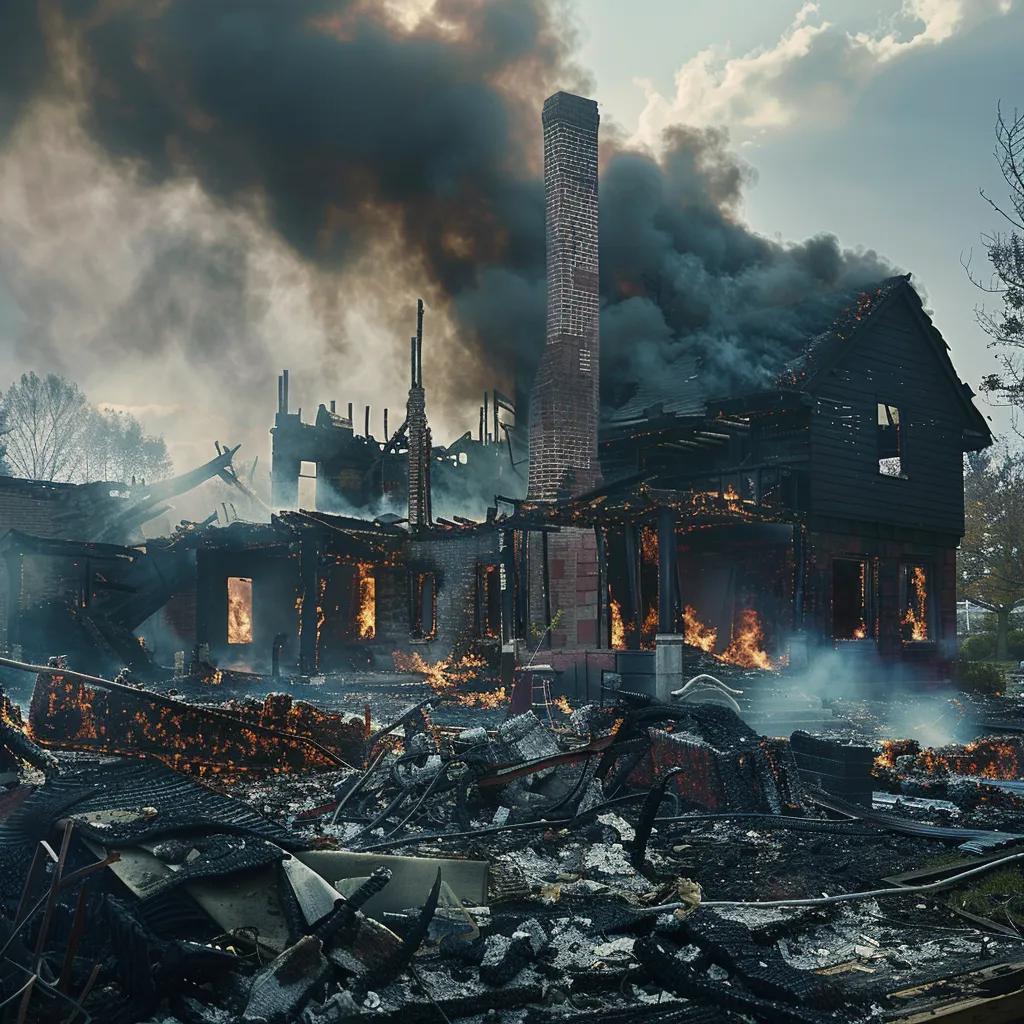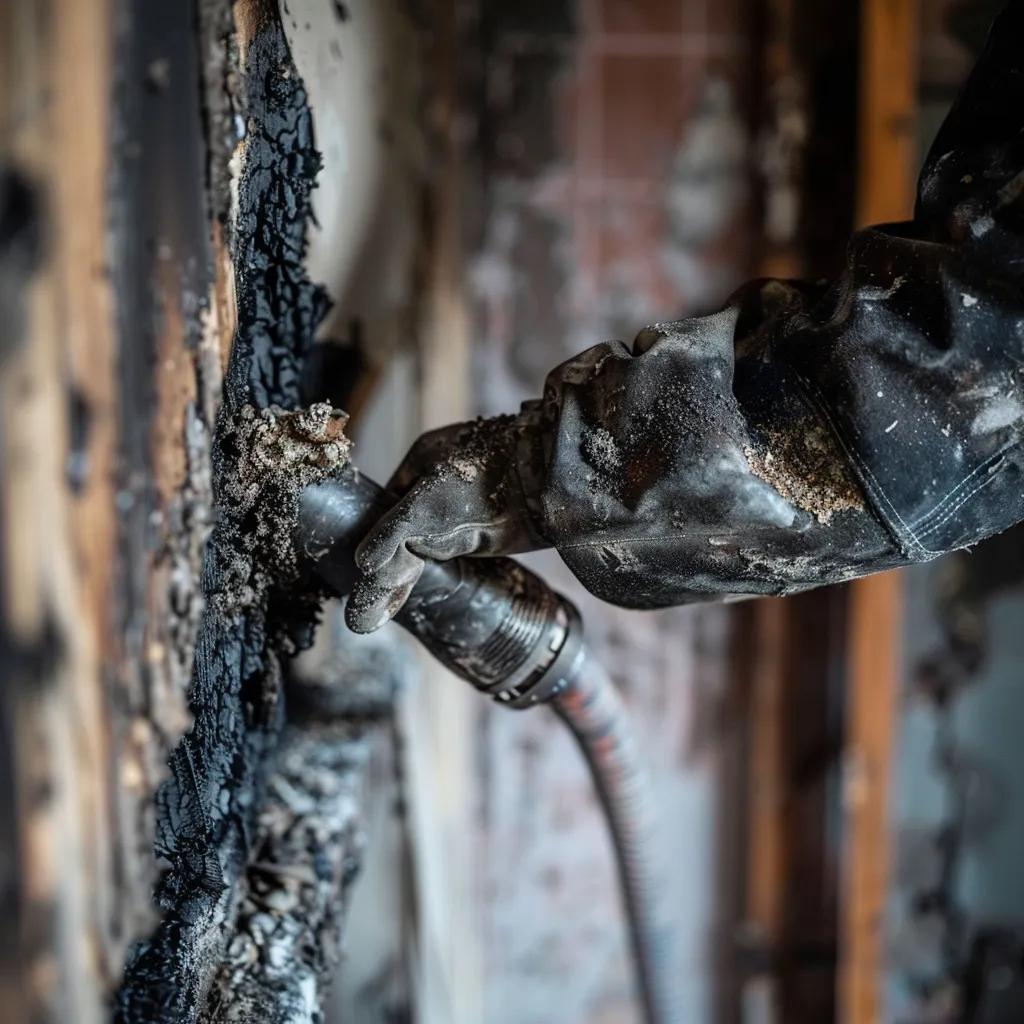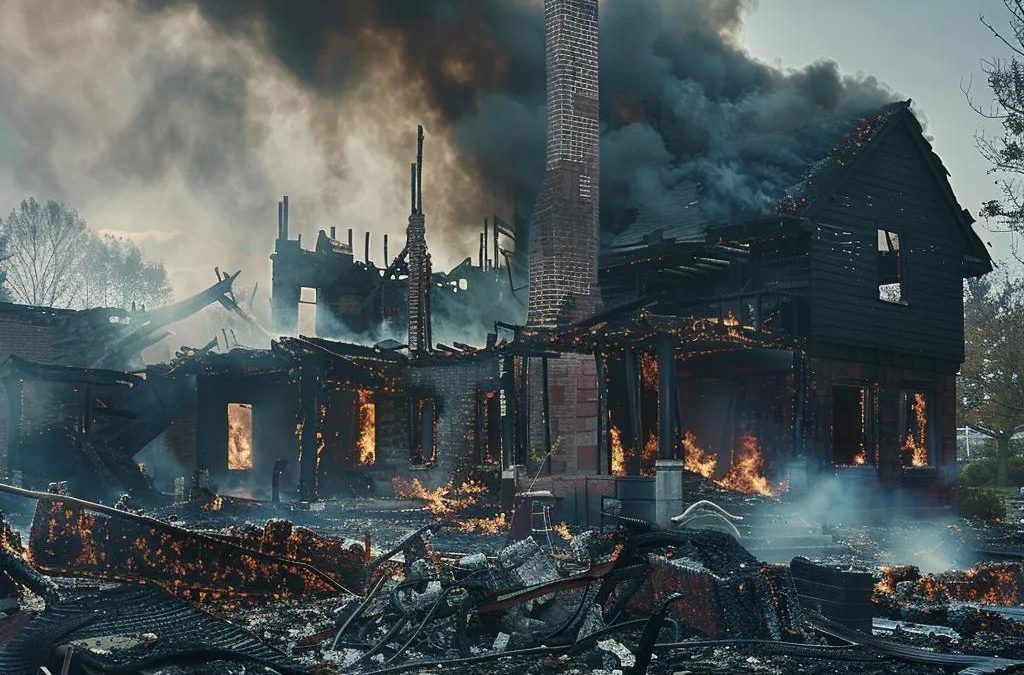
Complete Guide to Fire Damage Recovery Process Steps: How to Restore Your Property After a Fire

Experiencing a fire is a critical emergency that demands immediate, structured action to safeguard lives and limit property loss. This guide lays out the complete fire damage recovery process steps—from urgent safety measures and comprehensive damage assessment to cleanup, reconstruction, insurance navigation, and long-term prevention. We’ll walk you through each phase, highlight professional techniques used by Restoration Experts, and show how to coordinate with emergency responders and insurers. Whether you’re a homeowner, property manager, or commercial building owner in Long Island, NYC, Suffolk, or Nassau, this roadmap ensures you know exactly what to do after a fire.
What Are the Immediate Actions After a Fire to Ensure Safety and Protect Your Property?
Immediate actions after a fire define how effectively you secure your property and protect everyone’s safety. Taking swift measures to evacuate, assess hazards, and prevent further damage lays the groundwork for all subsequent recovery steps.
How Do You Prioritize Safety and Conduct an Initial Damage Assessment?
Prioritizing safety begins with confirming that all occupants are out of harm’s way and calling 911 if anyone is injured. A brief visual scan for structural weaknesses, active flames, and lingering smoke helps you determine if you can safely re-enter areas.
Before re-entry:
- Confirm with fire officials that the structure is stable.
- Wear protective gear (hard hat, gloves, N95 mask).
- Note obvious hazards (exposed wiring, hot spots).
These initial observations feed directly into planning the detailed damage assessment that follows, ensuring you know where to focus professional inspection efforts.
When and How Should You Contact Emergency Services and Your Insurance Provider?
Yes, you should contact emergency services immediately after ensuring personal safety and hazards are under control. Notify the fire department and, once cleared, call your insurance agent to report the loss. Provide:
- Policy number and description of the fire event.
- Photos or videos of visible damage.
- Any temporary repairs you plan (e.g., tarping).
An insurance claim number assigned early speeds up coverage decisions and sets expectations for inspections, bridging the gap between crisis response and financial recovery.
What Is Emergency Board-Up and How Does It Secure Your Property?

Emergency board-up secures openings and prevents unauthorized access, weather exposure, and wildlife intrusion. Restoration Experts deploys 24/7 board-up crews to cover broken windows, doors, and roof breaches using marine-grade plywood and industrial tarps.
| Entity | Attribute | Value |
|---|---|---|
| Emergency Board-Up | Service Availability | 24/7 Rapid Response |
| Board Materials | Type | Marine-grade plywood, weatherproof tarp |
| Purpose | Protection | Theft prevention, weather barrier |
Securing your property with professional board-up services halts secondary damage and paves the way for safe, thorough assessment.
How Is Fire Damage Assessed to Understand the Full Extent of Loss?
Comprehensive assessment quantifies structural, smoke, soot, water, and contents damage to guide remediation and insurance claims. Restoration Experts combines engineering inspections with specialized diagnostic tools for a full inventory of losses.
What Methods Are Used for Structural Damage Evaluation?
Structural damage evaluation identifies compromised load-bearing elements and hidden hazards. Certified engineers perform:
- Visual inspection of beams, joists, and supports.
- Moisture mapping with thermal imaging.
- Load-bearing tests and deflection measurements.
| Entity | Inspection Method | Value |
|---|---|---|
| Structural Element | Inspection Method | Visual scan, thermal imaging |
| Load-Bearing Test | Measurement | Deflection, stress-strain |
| Purpose | Outcome | Determine repair scope and safety protocols |
Fire Damage Assessment Techniques
Structural damage assessment often involves visual inspections, moisture mapping, and load-bearing tests to identify compromised elements and hidden hazards. These methods help determine the extent of damage and inform repair strategies, ensuring the safety and integrity of the structure.
National Fire Protection Association, Fire Protection Handbook (2017)
This research supports the methods used for structural damage evaluation.
How Do You Assess Smoke and Soot Damage on Different Surfaces?
Smoke and soot damage manifests as discoloration, pitting, and corrosive residue on materials. Assess by:
- Swab testing surfaces for pH and residue levels.
- Visual grading of discoloration on fabrics, drywall, and metals.
- Olfactory inspection for odor saturation.
Documenting these findings informs cleaning techniques and deodorization strategies tailored to each material type, ensuring thorough restoration.
What Are the Signs and Risks of Water Damage from Fire Suppression Systems?
Water from sprinklers and hoses often causes secondary damage such as mold growth and swelling. Look for:
- Elevated moisture readings in walls and floors.
- Staining or warping of wood and drywall.
- Early mold spores in humid areas.
Rapid water extraction and drying mitigate these risks, preventing mold remediation from becoming a costly addition to damage repair.
How Do You Inventory and Evaluate Contents Damage for Restoration or Replacement?
Contents assessment catalogs every salvageable and non-salvageable item for insurance and restoration planning. Use a room-by-room inventory:
- Photograph items from multiple angles.
- Tag furniture, electronics, documents, and textiles with condition notes.
- Classify: salvageable (cleaning/deodorization) vs. replace.
This detailed inventory supports accurate insurance claim valuations and informs professional contents restoration workflows.
What Are the Key Steps in Fire Damage Cleanup and Mitigation?
The cleanup and mitigation phase removes hazards and prepares your property for reconstruction. Professional techniques for smoke, soot, odor, water extraction, and mold prevention ensure a safe, hygienic environment.
Which Professional Techniques Are Used for Smoke and Soot Removal?

Smoke removal relies on dry, wet, and abrasive cleaning techniques based on surface type:
- Dry cleaning sponges lift light soot without moisture.
- HEPA-filter vacuuming extracts loose particulates.
- Chemical cleaners emulsify stubborn residues on non-porous surfaces.
These methods collectively eliminate corrosive soot and facilitate deeper deodorization, making rebuilt surfaces safe and sanitary.
Smoke and Soot Removal Methods
Smoke removal techniques vary based on the surface type, utilizing dry cleaning sponges, HEPA-filter vacuuming, and chemical cleaners to eliminate corrosive soot and facilitate thorough deodorization. These methods are essential for restoring surfaces to a safe and sanitary condition after a fire.
Institute of Inspection, Cleaning and Restoration Certification, IICRC S500 Standard for Professional Water Damage Restoration (2015)
This research supports the professional techniques used for smoke and soot removal.
How Is Odor Removal and Deodorization Effectively Performed?
Odor removal neutralizes smoke molecules bound to materials using:
- Ozone treatment that oxidizes odor compounds.
- Hydroxyl generators to safely break down volatile organic compounds.
- Thermal fogging to disperse deodorants into hidden cavities.
Combining these processes eradicates persistent odors, restoring indoor air quality and comfort for occupants.
What Is the Process for Water Extraction, Drying, and Dehumidification?
Water mitigation uses high-capacity pumps, dehumidifiers, and air movers to return moisture levels to pre-loss conditions.
- Submersible pumps remove standing water within hours.
- Commercial dehumidifiers lower relative humidity to <40%.
- Air movers keep airflow across wet assemblies, preventing mold.
Restoration Experts monitors moisture readings until all structural components register safe levels, preventing microbial growth.
How Can Mold Growth Be Prevented and Remediated After Fire Damage?
Preventing mold involves antimicrobial treatments on damp surfaces and continuous drying. If mold appears:
- Containment using negative-air chambers.
- Removal of mold-infested materials.
- HEPA vacuuming and antimicrobial application.
Addressing mold risks immediately protects indoor air quality and safeguards occupant health.
How Is Property Restored Through Repairs, Reconstruction, and Contents Restoration?
Restoration transitions from cleanup to rebuilding. Meticulous structural repairs and skilled contents restoration by Restoration Experts return your home or business to pre-fire condition.
What Are the Common Structural Repairs and Rebuilding Steps After Fire Damage?
Structural repairs follow assessment reports and typically include:
- Demolition of unsalvageable framing and drywall.
- Replacement of charred studs and joists.
- Drywall installation, plaster finishing, and painting.
- Flooring and roofing repairs or replacement.
| Entity | Attribute | Value |
|---|---|---|
| Drywall Repair | Process | Tape, mud, sanding, paint |
| Framing Replacement | Material | Treated lumber, engineered wood |
| Roofing Repair | Method | Shingle replacement or metal roofing |
Sequential rebuilding restores both function and aesthetics, preparing the property for final finishing.
How Are Personal Belongings and Contents Restored After Fire Damage?
Contents restoration rescues furniture, electronics, documents, and textiles using specialized cleaning:
- Ultrasonic cleaning for metal and glass items.
- Freeze-drying and deacidification of documents.
- Steam and shampoo cleaning for fabrics and upholstery.
Restored items are returned with professional quality, minimizing replacement costs and preserving sentimental value.
Why Is HVAC System Cleaning Important for Air Quality Post-Fire?
HVAC cleaning removes soot, ash, and odor compounds from ductwork and coils to prevent recirculation of contaminants.
- Duct sealing and vacuuming reduce particle load.
- Coil cleaning ensures efficient heat exchange.
- Filter replacement traps lingering particulates.
Clean HVAC systems safeguard indoor air quality and ensure healthy, allergen-free ventilation throughout occupied spaces.
How Do You Navigate the Insurance Claim Process for Fire Damage Recovery?
A streamlined insurance claim process recovers financial losses faster. Restoration Experts helps document damage and liaise with adjusters to secure full coverage.
What Documentation Is Needed to Support Your Fire Damage Insurance Claim?
Robust documentation includes:
- High-resolution photos and videos of every affected area.
- A detailed inventory list with item values.
- Fire department report and cause of loss statement.
- Receipts for emergency repairs and board-up services.
Submitting these materials early accelerates claim approval and prevents coverage gaps.
How Should You Work Effectively with Insurance Adjusters?
Effective adjuster collaboration relies on transparent communication and professional documentation.
- Schedule an on-site walkthrough with your representative.
- Provide the contents inventory and structural assessment report.
- Ask clarifying questions on coverage limits and exclusions.
Maintaining openness fosters trust and ensures adjusters understand the full scope of your loss.
What Does Homeowners Insurance Typically Cover for Fire Damage Restoration?
Most policies cover:
- Structural repairs for fire and smoke damage.
- Contents restoration or replacement up to policy limits.
- Emergency board-up and temporary living expenses.
- Debris removal and professional cleaning services.
Understanding coverage details prevents unexpected out-of-pocket expenses and clarifies deductibles.
Why Choose Restoration Experts for Your Fire Damage Recovery in New York and Surrounding Areas?
Restoration Experts combines local knowledge, certified technicians, and 24/7 availability to deliver seamless fire damage restoration across Long Island, NYC, Suffolk, and Nassau.
What Expertise and Local Knowledge Does Restoration Experts Offer in Long Island, NYC, Suffolk, and Nassau?
Our team holds IICRC certifications and navigates local building codes and insurance regulations unique to New York. We understand region-specific fire causes—gas line mishaps in NYC apartments and cooking fires in suburban homes—and deploy the right equipment accordingly. This localized expertise speeds response times and ensures compliance.
How Does Restoration Experts Ensure a Seamless and Supportive Restoration Process?
We assign a dedicated project manager to coordinate every phase, provide daily progress updates, and handle insurance communication on your behalf. Our transparent pricing, flexible payment plans, and 24/7 emergency hotline reduce stress, so you can focus on rebuilding your life while we restore your property.
What Are the Long-Term Recovery and Fire Prevention Strategies After Restoration?
Long-term recovery involves routine maintenance and proactive fire prevention to safeguard your investment and enhance safety.
How Should You Maintain Your Property Post-Restoration to Avoid Future Damage?
Regular inspections and upkeep keep systems in optimal condition:
- Test smoke alarms monthly and replace batteries annually.
- Schedule HVAC maintenance to prevent duct leaks.
- Inspect electrical panels for loose connections.
- Clean gutters and remove debris around ignition sources.
Consistent maintenance closes potential risk points and maintains restoration integrity.
What Fire Prevention Tips Can Homeowners Follow to Reduce Risk?
Homeowners can reduce fire risk by:
- Installing interconnected smoke and CO alarms on each level.
- Conducting annual chimney and dryer vent cleanings.
- Keeping flammable materials away from heat sources.
- Developing and practicing an emergency escape plan.
These proactive measures complement professional restoration to create a safer living environment.
What Emergency Preparedness Resources Are Recommended for Homeowners?
An emergency kit should include:
- Flashlight, batteries, and first-aid supplies.
- Copies of insurance documents and important records.
- Portable power bank and multi-tool.
- Bottled water and non-perishable snacks.
Having these resources ready ensures you’re prepared for any disaster, supporting faster, more organized responses. Restoring a fire-damaged property demands a methodical, expert-driven approach from urgent safety steps and precise assessments to advanced cleaning, reconstruction, and insurance facilitation. Restoration Experts brings local mastery, certified crews, and 24/7 responsiveness to guide you through every phase in New York’s Long Island, NYC, Suffolk, and Nassau regions. By following structured fire damage recovery process steps and employing professional techniques, you’ll secure your home’s safety, speed up restoration, and minimize long-term risks. Get in touch with our team today to begin your complete fire damage recovery and reclaim peace of mind.
